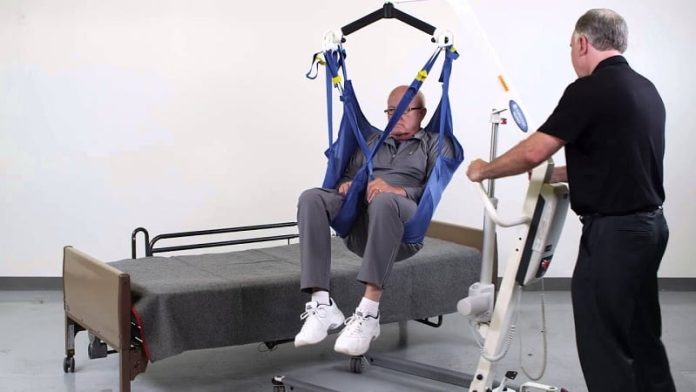Moving immobile patients or patients with limited mobility from one place to another can be complicated and dangerous. There is a higher risk of injury for both patients and caregivers. Assistive lifting devices for such patients can help caregivers move them from bed to wheelchair, shower, or toilet safely and efficiently. Patient-lifting hoists and slings are useful devices for hospitals, nursing homes, facilities, and home care environments. These kinds of equipment are designed to assist in safely moving a person from one place to another. Click here to find out the variety of patient-lifting hoists and slings available.
Patient-lifting hoists and slings are safe, cost-efficient, and convenient devices for both patients and caregivers. For buying suitable patient-lifting hoists and slings, you need to look into some factors given below.
- Manual vs. Electric
There are manual patient lifts as well as electric patient lifts for everyday use. For ease of operation and smoother movements, electric patient lifts are an ideal choice. Powered patient lifts can also be self-operated by the individual, thereby supporting fall recovery. On the other hand, manual lifts are more affordable and always operational as they are not dependent on batteries or electric power. Foldable hoists are also available for easy storage.
- Weight capacity
The weight of the patient is an essential factor to consider when choosing a patient lift. Patient lifts are available in a variety of weight capacity. Bariatric hoist models are ideal for heavy-weight patients.
- Range of lift height
Patient lifts should have a wide range of lift heights that will enable patient lifts to pick patients up from as low as the floor and high enough to lift them to an elevated mattress.
- Type of Hoist
Next, you need to select the type of hoist you need for the patient. The different types of hoists include mobile hoists, stand assist hoists, and fixed hoists.
- Fixed or ceiling track hoist – It allows a person to move long distances within the home.
- Mobile hoists – They can be used wherever needed and for maneuvering patients from bed to chair or vice versa.
- Stand assist hoists – They are devised to support patients to a standing position.
- The type of Sling
Slings are used in conjunction with a hoist. They wrap around a patient’s body and secure to the hoist supporting patients as they are moved from one place to another. Slings are available in various sizes and in specialised designs to suit patient’s needs. It is essential to choose a sling that is comfortable and supported. There are general slings that support the patient’s legs, torso, and head. Hygiene slings, disposable slings, pivot slings, leg slings are some other slings to choose from.
The type of material used in the sling is another aspect to consider. Slings are made from either polyester mesh ideal for patients who get wet or padded polyester for easy cleaning. Also, if the patient is heavy-weight, a bariatric sling will be ideal to use.
Ensure the safety and comfort of your loved one by choosing the right patient-lifting hoists and slings. It’s best to consult with your healthcare team to choose the right equipment that meets your needs.










